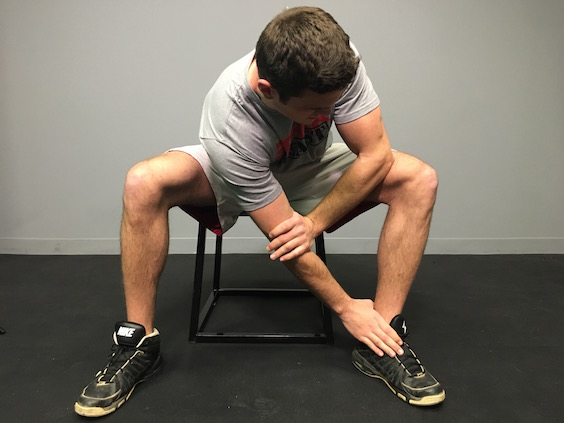How to Stretch After Sitting in Class All Day
When you’re sitting in s classroom all day, you’re liable to develop aches, pains and stiffness. After all, our natural state is regular movement and activity. In addition, bad posturing habits and extra hours after school doing homework can leave you with sore, stiff and aching muscles. This is why learning how to stretch after a long day at school is so important.
Today, 8 in 10 Americans sit at a desk all or most of the time for work. The standard advice is to take a brief walk every hour or so, but not everyone can get away with that many breaks, or experience significant relief from a short walk. Instead, incorporate some stretches to work out your muscles at the end of the day. By using light stretching exercises, you can improve your flexibility and reduce pain in your muscles. Here are some basic stretching exercises you can try in the office to loosen up.
The Chair Twist
When you’re sitting forward and hunched over for a long period of time, your spine and shoulders can begin to ache severely. You can stretch out these muscles and loosen your joints by using the chair twist exercise. This one is pretty straightforward. Hold your back upright as much as possible. Sitting in the 10 or 2 o’clock position in your chair—not pointing your feet directly forward, but to the side—twist your upper body and grab the back of the chair with both hands. Repeat it 10 times on both sides.
You shouldn’t feel pain when you do this exercise, but it should tug at your back and shoulder muscles to loosen tension, increase circulation and reduce pressure above and below your shoulders.
Bodyweight Squats
If you’ve been in a chair all day, using bodyweight exercises is a great opportunity to move multiple muscle groups and stretch everything at once. Bodyweight squats in particular can strengthen muscles in your legs, glutes and back.
To do a proper bodyweight squat, be sure you’re standing with your knees approximately shoulder’s-length apart, and that you have enough room to swing your arms back and forth. When you begin the squat, you can swing your arms forward and hold them up for balance.
Bring your weight down, letting your knees come just over your foot but not past it. Lower your body as much as you can without letting your knees move forward past your feet, then stand back up. Repeat this 10 times to complete a set.
Shoulder Lifts
Hunching over takes a serious toll on your shoulders, which may roll forward and stay compressed all day. Bring back some strength and flexibility in your neck and shoulders by practicing shoulder lifts. This floor exercise can loosen your upper back and stretch out painful kinks from slouching forward all day. You’ll need to do this exercise regularly, four times a week, to see significant improvements in your shoulder strength, but over time it will help significantly.
To perform this exercise, lie on your belly on a mat or on a carpeted floor. Your arms should be extended to the sides. Put your hands by your head so that your arms are at a 90-degree angle on either side. Using your body strength, try to lift your head, neck, arms and shoulders briefly before slowly coming back down. Repeat this exercise 10 times, then take a break —it might be surprisingly exhausting.
Leg stretches
Underutilized when sitting, your legs may feel surprisingly stiff and sore after hours of not being used. When you have time, stretch your legs to improve flexibility, balance and blood circulation. You can start with a basic stretch: Sit at the edge of your chair, extend and point your legs on the floor and try to lean down and grab your ankles without bending your legs. This can stretch your hamstrings and thigh muscles, allowing you to feel some relief from a day’s soreness.
Another exercise involves a little more balance. Stand up at your desk (if possible), then lift your leg up behind you. Reach back and try to grab it at the ankle or calf, and hold it for 10 seconds. Do the same for the other leg and repeat two or three times for the full effect.
Sitting at a table or desk all day can bring you a surprising amount of muscle pain. Take the time to care for your body, stretch your muscles and remind yourself that your body is a functioning tool that’s meant to be used.
READ MORE:
RECOMMENDED FOR YOU
MOST POPULAR
How to Stretch After Sitting in Class All Day
When you’re sitting in s classroom all day, you’re liable to develop aches, pains and stiffness. After all, our natural state is regular movement and activity. In addition, bad posturing habits and extra hours after school doing homework can leave you with sore, stiff and aching muscles. This is why learning how to stretch after a long day at school is so important.
Today, 8 in 10 Americans sit at a desk all or most of the time for work. The standard advice is to take a brief walk every hour or so, but not everyone can get away with that many breaks, or experience significant relief from a short walk. Instead, incorporate some stretches to work out your muscles at the end of the day. By using light stretching exercises, you can improve your flexibility and reduce pain in your muscles. Here are some basic stretching exercises you can try in the office to loosen up.
The Chair Twist
When you’re sitting forward and hunched over for a long period of time, your spine and shoulders can begin to ache severely. You can stretch out these muscles and loosen your joints by using the chair twist exercise. This one is pretty straightforward. Hold your back upright as much as possible. Sitting in the 10 or 2 o’clock position in your chair—not pointing your feet directly forward, but to the side—twist your upper body and grab the back of the chair with both hands. Repeat it 10 times on both sides.
You shouldn’t feel pain when you do this exercise, but it should tug at your back and shoulder muscles to loosen tension, increase circulation and reduce pressure above and below your shoulders.
Bodyweight Squats
If you’ve been in a chair all day, using bodyweight exercises is a great opportunity to move multiple muscle groups and stretch everything at once. Bodyweight squats in particular can strengthen muscles in your legs, glutes and back.
To do a proper bodyweight squat, be sure you’re standing with your knees approximately shoulder’s-length apart, and that you have enough room to swing your arms back and forth. When you begin the squat, you can swing your arms forward and hold them up for balance.
Bring your weight down, letting your knees come just over your foot but not past it. Lower your body as much as you can without letting your knees move forward past your feet, then stand back up. Repeat this 10 times to complete a set.
Shoulder Lifts
Hunching over takes a serious toll on your shoulders, which may roll forward and stay compressed all day. Bring back some strength and flexibility in your neck and shoulders by practicing shoulder lifts. This floor exercise can loosen your upper back and stretch out painful kinks from slouching forward all day. You’ll need to do this exercise regularly, four times a week, to see significant improvements in your shoulder strength, but over time it will help significantly.
To perform this exercise, lie on your belly on a mat or on a carpeted floor. Your arms should be extended to the sides. Put your hands by your head so that your arms are at a 90-degree angle on either side. Using your body strength, try to lift your head, neck, arms and shoulders briefly before slowly coming back down. Repeat this exercise 10 times, then take a break —it might be surprisingly exhausting.
Leg stretches
Underutilized when sitting, your legs may feel surprisingly stiff and sore after hours of not being used. When you have time, stretch your legs to improve flexibility, balance and blood circulation. You can start with a basic stretch: Sit at the edge of your chair, extend and point your legs on the floor and try to lean down and grab your ankles without bending your legs. This can stretch your hamstrings and thigh muscles, allowing you to feel some relief from a day’s soreness.
Another exercise involves a little more balance. Stand up at your desk (if possible), then lift your leg up behind you. Reach back and try to grab it at the ankle or calf, and hold it for 10 seconds. Do the same for the other leg and repeat two or three times for the full effect.
Sitting at a table or desk all day can bring you a surprising amount of muscle pain. Take the time to care for your body, stretch your muscles and remind yourself that your body is a functioning tool that’s meant to be used.
READ MORE:











